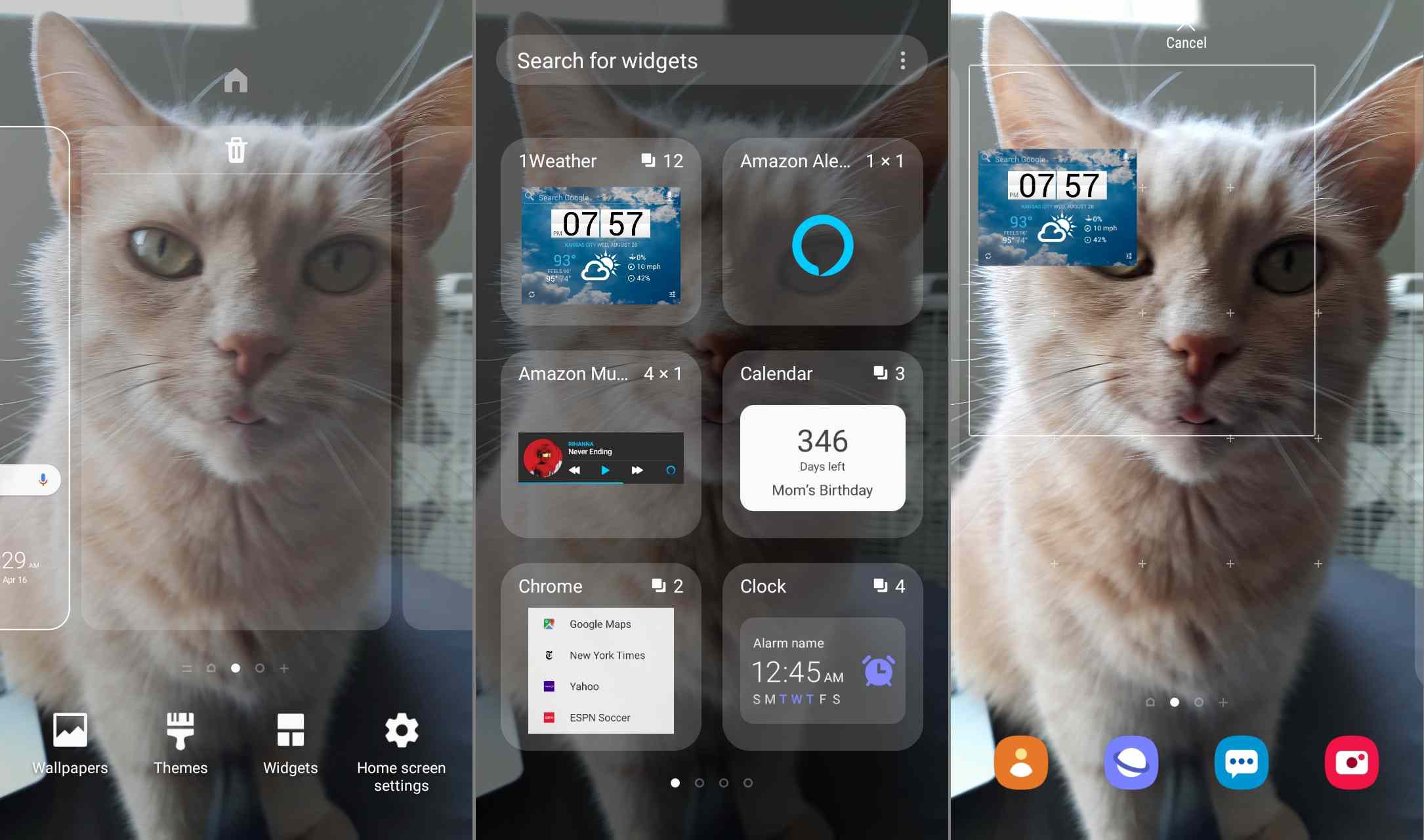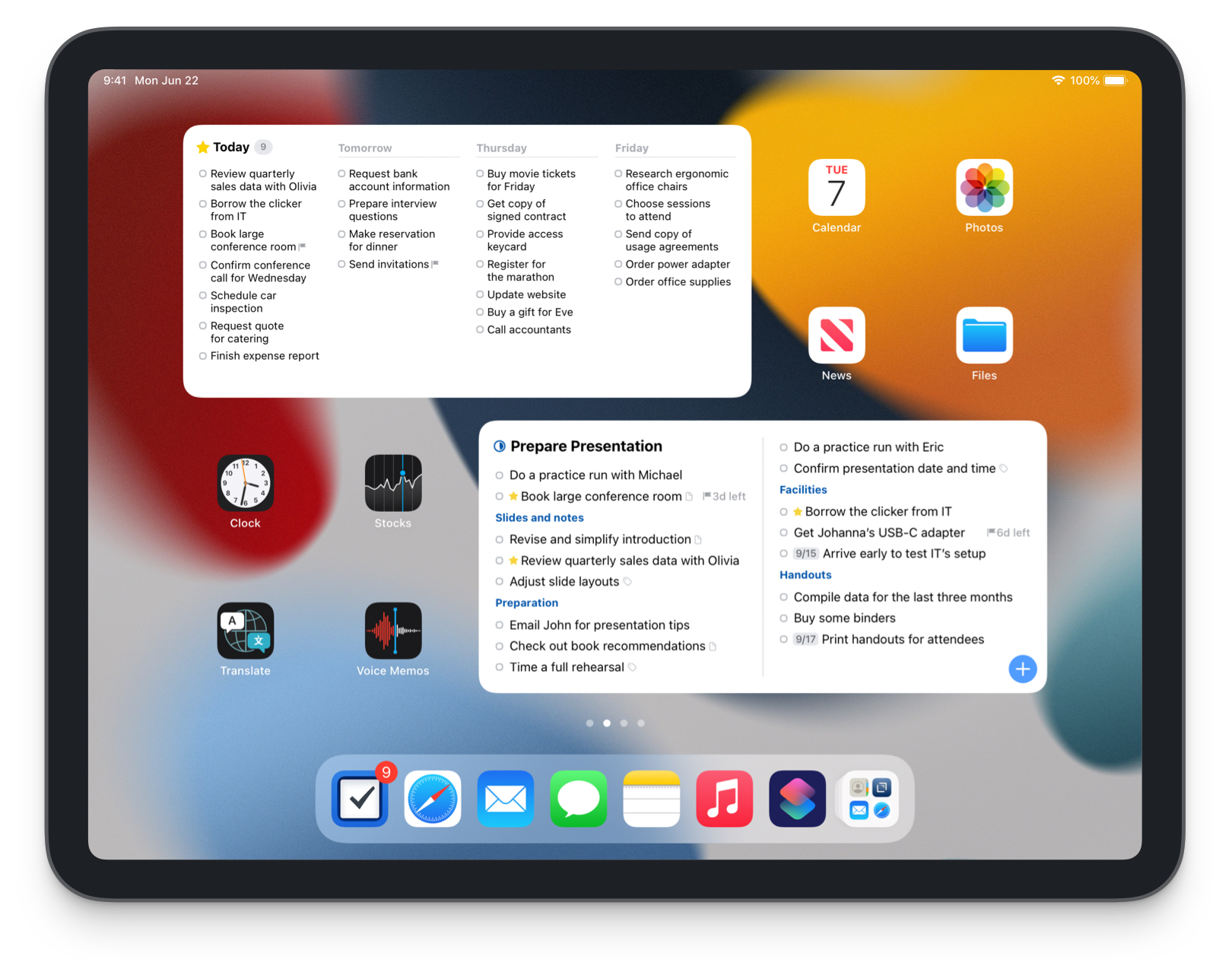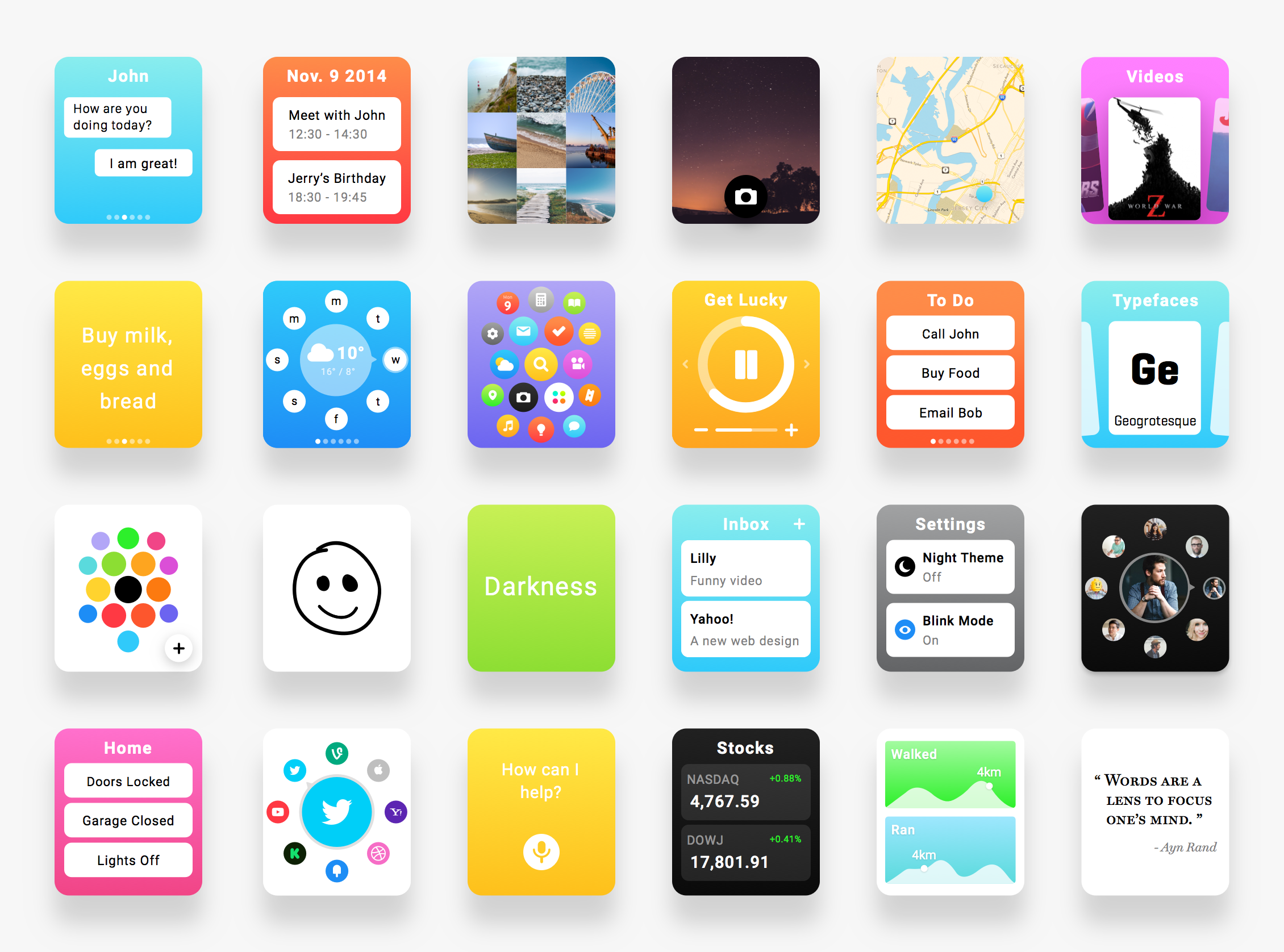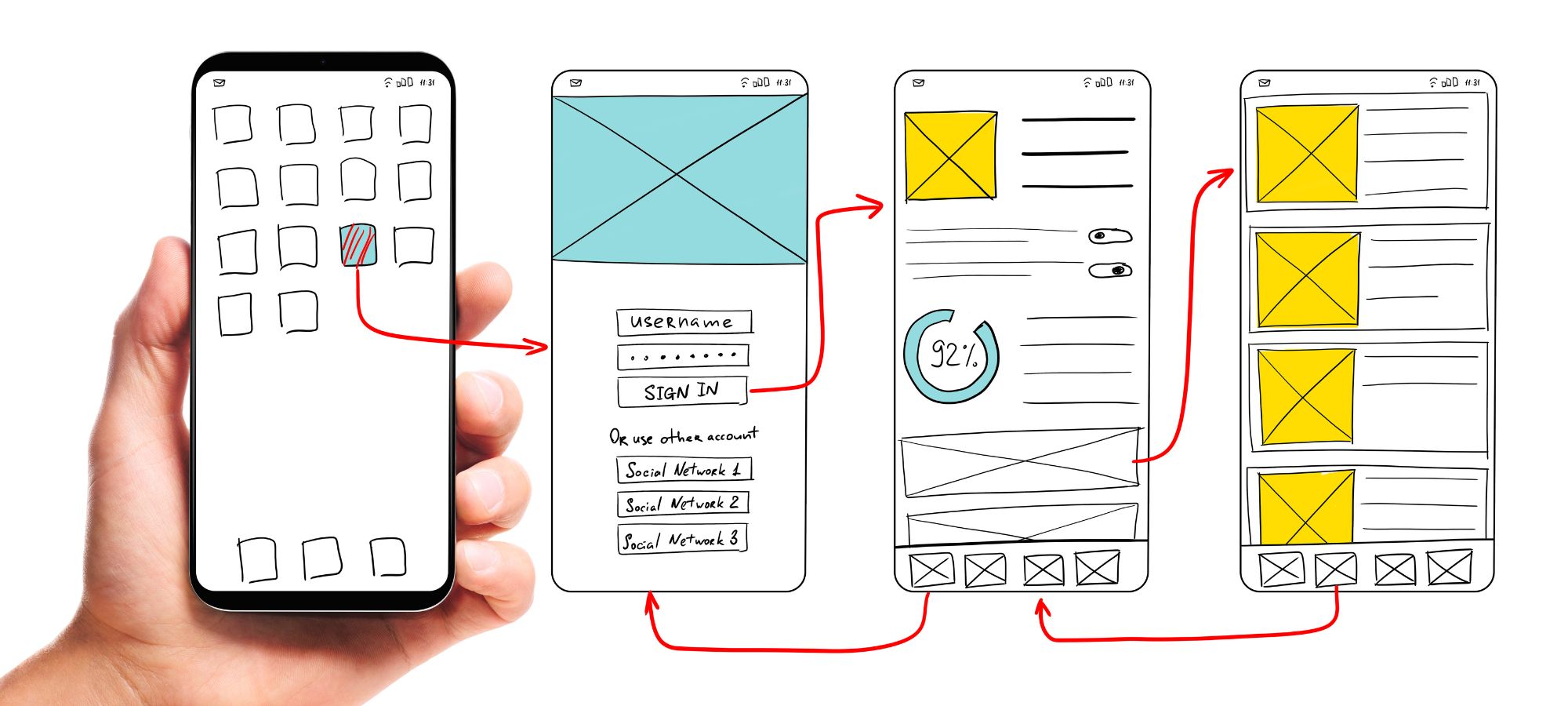In today’s fast-paced digital world, technology is constantly evolving and improving. With the rise of smartphones and other electronic devices, we have become heavily reliant on apps and software to make our lives easier. And at the heart of these applications lies the humble widget.
Widgets are small, interactive elements that can be placed on a user’s home screen or within an app for quick access to specific information or functions. They come in various shapes, sizes, and functionalities, and have become an integral part of how we interact with our devices. In this article, we will delve deeper into the world of widgets and explore their impact on our daily lives.
The Evolution of Widgets
Origins of Widgets
The concept of widgets dates back to the early days of personal computing when desktop computers were still popular. At that time, widgets were known as “gadgets,” and they were small stand-alone applications that displayed simple information such as weather updates, stock prices, and news headlines. These gadgets were mostly used for entertainment purposes and were not as widely used as they are today.

Widgets were referred to as “gadgets,” and they were compact, independent applications that showed basic information like weather forecasts, stock quotes, and news summaries
Introduction to Widgets on Mobile Devices
It wasn’t until the advent of smartphones that widgets became more prevalent. With the introduction of Apple’s iOS 8 in 2014, widgets finally made their way onto mobile devices. This feature allowed users to add widgets to their device’s home screen, providing them with quick access to information without having to open individual apps.
Since then, widgets have become a standard feature on both iOS and Android devices, with users having the power to customize their screens by adding, rearranging, or removing widgets as they see fit.
Modern-Day Widgets
Today, widgets have evolved beyond just displaying basic information. They now offer more advanced functionalities, such as the ability to interact with the user, display live data, and even control smart home devices. With advancements in technology, widgets have become more powerful and versatile, enabling users to do more with just a few taps on their screens.
Different Types of Widgets
Informational Widgets
Informational widgets are the most common type of widget found on mobile devices. These widgets display real-time information such as weather updates, stock prices, or news headlines. They provide users with quick access to important information without having to open an app.

Informational widgets represent the predominant type of widget typically encountered on mobile devices
Some examples of informational widgets include the Google News widget, which displays trending news stories, and the AccuWeather widget, which shows the current weather conditions and forecast for the day or week.
Control Widgets
Control widgets allow users to control certain settings or functions on their device without having to open the corresponding app. For instance, a music player widget allows users to play, pause, or skip songs without opening the music player app.
Similarly, a flashlight widget lets users turn their phone’s flashlight on or off without accessing the settings menu. These widgets save time and effort, as users don’t have to navigate through multiple menus to perform simple tasks.
Social Media Widgets
Social media widgets have become increasingly popular over the years, allowing users to stay connected with their online communities without having to open separate apps. These widgets display the latest updates from social media accounts, such as tweets, posts, or messages, directly on the user’s home screen.
Facebook, Twitter, and Instagram all offer widgets that allow users to interact with their social media platforms without leaving their home screen.
Utility Widgets
Utility widgets are designed to provide users with quick access to frequently-used features or services. For instance, a calendar widget displays the upcoming events and appointments for the day, while a calculator widget allows users to perform calculations without having to open the calculator app.
Other examples of utility widgets include notes, reminders, and task managers, all of which help users be more productive and organized.
Interactive Widgets
Interactive widgets are the most advanced type of widget, as they allow users to perform actions or complete tasks without opening an app. For instance, a search widget lets users search for items using a search engine directly from their home screen.
Google’s Assistant and Apple’s Siri widgets take this functionality to the next level by allowing users to perform voice commands without having to unlock their device or open an app.
Advantages of Using Widgets
Convenience and Time-Saving
The primary benefit of using widgets is convenience and time-saving. With widgets, users can access information or perform tasks quickly and easily without having to navigate through multiple menus or open separate apps. This is especially useful for frequently used features and functions, as it eliminates the need to constantly open and close apps, saving users valuable time.

The main advantage of using widgets is their convenience and ability to save time
Moreover, widgets also allow users to customize their screens according to their needs, providing them with quick access to the features and information that are most important to them.
Increased Productivity
Widgets can also increase productivity by allowing users to perform tasks more efficiently. As mentioned earlier, utility widgets such as calendars, task lists, and reminders help users stay organized and on top of their daily responsibilities.
Furthermore, interactive widgets, like voice assistants, can help users complete tasks hands-free, allowing them to multitask and be more productive.
Personalization
Another advantage of widgets is the ability to personalize your device’s home screen. With widgets, users have the option to choose which features or information they want to display on their screens, making it easier to access the things that matter most to them.
This feature also helps users declutter their home screens, as they can remove unnecessary icons and replace them with widgets instead.
Improved User Experience
Widgets contribute to an overall enhanced user experience by providing a seamless and intuitive way to interact with devices. They eliminate the need for users to open multiple apps to access information or perform tasks, making the user experience more efficient and enjoyable.
Moreover, widgets also help bridge the gap between mobile and desktop experiences by bringing desktop-like functionalities to mobile devices.
Challenges of Using Widgets
Battery Drain
One of the biggest challenges of using widgets is the impact they have on battery life. Since widgets display real-time information and require constant communication with the internet, they can drain your device’s battery quickly.
To mitigate this issue, it’s essential to choose widgets that are well-optimized and designed to use minimal resources. It’s also recommended to regularly remove widgets that are no longer needed to further improve battery life.
Vulnerability to Security Risks
Another challenge of using widgets is their vulnerability to security risks. Since widgets have the ability to interact with the user and access certain features and data, they can be exploited by malicious actors to gain unauthorized access to a user’s device.
To protect against such attacks, it’s crucial to only download widgets from trusted sources and keep your device’s security software up-to-date.
Inconsistent Performance Across Devices
Due to the different screen sizes and resolutions of various devices, widgets may not always display correctly or function as intended. This inconsistency in performance across devices can cause frustration for users, especially if they switch between different devices frequently.
To ensure a smooth user experience, developers must optimize their widgets for different devices and screen sizes.
Future of Widgets
Expansion to Wearable Technology
With the rise of wearable technology, the use of widgets is expected to expand beyond smartphones and tablets. As wearable devices become more mainstream, we can expect to see widgets being developed for them as well, providing users with quick access to important information and functions on their wearable devices.
Some companies have already started incorporating widgets into their wearable technology. For instance, Apple Watch has a complications feature, which is essentially a widget that displays information such as weather, heart rate, and activity goals on the watch face.
Advancements in AI
As technology continues to advance, we can expect widgets to become more powerful and intelligent. With advancements in Artificial Intelligence (AI), widgets may become more personalized and proactive, adapting to users’ needs and providing them with relevant information and functionalities.
Furthermore, AI-powered widgets may also learn and improve over time, making them even more valuable to users.
Integration with Smart Home Devices
With the growing popularity of smart home devices, we can also expect to see widgets being integrated with these devices. This integration will allow users to control their smart homes directly from their device’s home screen, making it easier and more convenient to manage their connected devices.
Top Widget Apps for iOS and Android
iOS Widgets
- Copied – Clipboard Manager: This widget allows users to store multiple items on their clipboard, making it easier to copy and paste frequently-used text or images.
- Fantastical – Calendar & Tasks: This widget displays upcoming events and tasks from the user’s calendar and task list, making it easier to stay organized and on schedule.
- WaterMinder – Hydration Reminder: This widget reminds users to drink water throughout the day and tracks their daily water intake, helping them stay hydrated.
- Wdgts – Customizable Widgets: This app offers a variety of customizable widgets that display everything from weather updates to health data.
- Apollo for Reddit: This widget displays the latest posts from the user’s favorite subreddits, allowing them to stay updated on their feed without opening the Reddit app.
Android Widgets
- KWGT Kustom Widget Maker: This app lets users create custom widgets using different shapes, sizes, and functionalities, giving them full control over how their widgets look and function.
- 1Weather: This widget provides detailed weather information, including current conditions, hourly and daily forecast, and severe weather alerts.
- My Notes – Notepad: This widget allows users to jot down quick notes and reminders without having to open a separate app, making it easier to stay organized.
- DigiCal Calendar Agenda: This widget displays upcoming appointments and events from the user’s calendar, helping them keep track of their schedule.
- Google Keep – Notes and Lists: This widget lets users create and access notes and lists directly from their home screen, making it easier to stay on top of tasks and responsibilities.
Conclusion
Widgets have come a long way since their humble beginnings as “gadgets.” They have evolved into powerful tools that allow users to access information and perform tasks quickly and easily. They have also become an essential aspect of customizing and personalizing our devices, providing us with an enhanced user experience.
As technology continues to advance, we can expect widgets to become even more feature-rich and intelligent, making our lives more convenient and efficient. With the potential for expansion into wearable technology and integration with smart home devices, the future of widgets is certainly something to look forward to. Whether you’re an iOS or Android user, there are plenty of widget options available to enhance your device’s functionality and improve your overall user experience.



